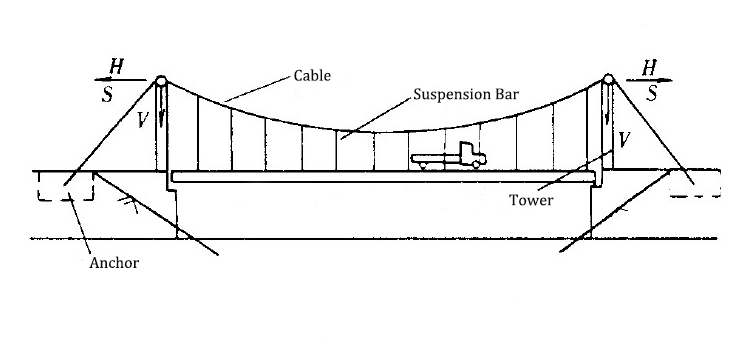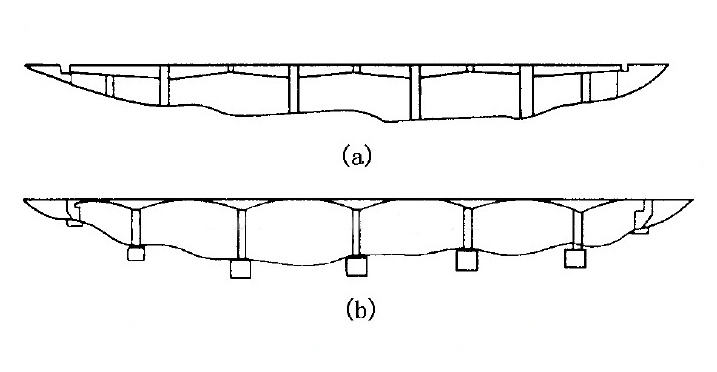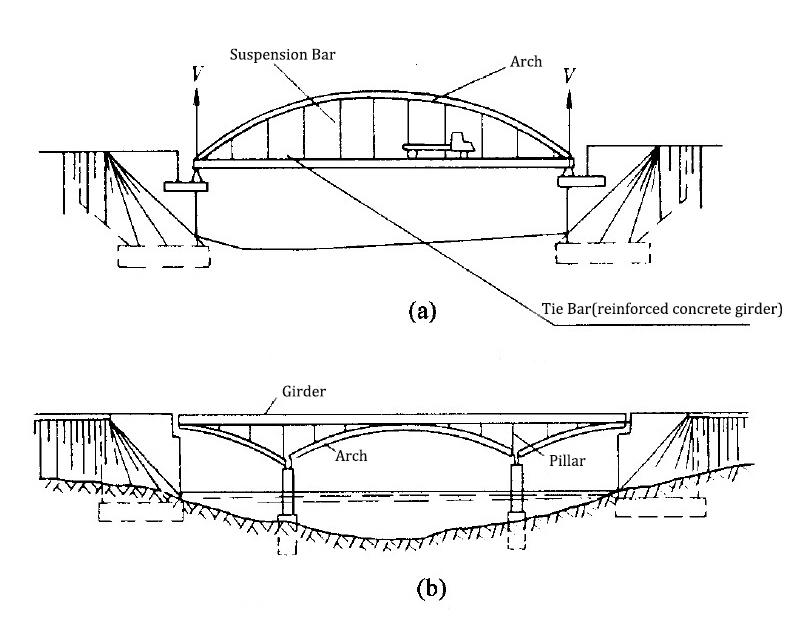Bridges can be classified based on various criteria, including purpose, construction materials, usage, deck position, and obstacles crossed. However, the most fundamental classification is based on their structural systems, which generally fall into five categories: girder bridges, rigid frame bridges, arch bridges, suspension bridges, and cable-stayed bridges.
1.Girder Bridges
Girder bridges are one of the oldest structural systems. Under vertical loads, they generate no horizontal reactions. The girder in the main load-bearing component experiences significant bending moments, requiring reinforcement in the tensile zone. Common types include:
- Simply supported slab bridges: Widely used for small spans.
- Simply supported girder bridges: Common in highway bridges.
- Continuous girder bridges: Favored in urban settings due to spatial constraints and aesthetic demands.
2. Rigid Frame Bridges
In rigid frame bridges, the girder/slab and piers/walls are integrally connected, forming a monolithic structure. This design minimizes mid-span height (Fig.1), making it ideal for urban overpasses or navigable rivers where reduced elevation and increased vertical clearance are critical. However, rigid frame bridges are relatively challenging to construct.

Fig.1 V-shaped pier rigid frame bridge
2. Arch Bridges
Arch bridges primarily bear vertical loads through horizontal thrust, with the arch ring or rib acting as the main compressive element. Traditional arch bridges use masonry materials (stone, brick, or concrete), while modern variants like concrete-filled steel tubular (CFST) arch bridges blend aesthetics and functionality, making them popular for municipal projects.
3. Suspension Bridges
Traditional suspension bridges rely on main cables suspended between towers to carry loads (Fig.2). Under vertical loads, cables endure massive tension, necessitating large anchorages. Modern suspension bridges employ high-strength steel cables for superior tensile performance, enabling ultra-long spans (economic spans exceeding 500m). Advantages include:
- Lightweight components for easy transport and assembly.
- Minimal construction height for unparalleled span capabilities.

Fig.2 Suspension Bridge
4. Composite System Bridges
Composite bridges combine multiple structural systems to optimize performance. Key subtypes include:
(1)T-shaped Rigid Frame & Continuous Rigid Frame Bridges
These integrate girders and rigid frames, developed for prestressed concrete cantilever construction (Fig.3). Construction and service load states align, reducing material use and accelerating project timelines.

Fig.3 T-shaped Rigid Frame & Continuous Rigid Frame Bridges
(2) Girder-Arch Composite Systems
Examples include tied-arch bridges, truss-arch bridges, and multi-span arch-girder structures (Fig.4). These systems merge the bending resistance of girders with the compressive strength of arches. Prestressed concrete girders counteract arch thrust, eliminating the need for massive foundations. Their elegance and adaptability make them a top choice for urban river crossings.

Fig.4 Girder-Arch Composite Systems
(3) Cable-Stayed Bridges
Cable-stayed bridges combine compressive towers, tensioned cables, and flexural girders (Fig.5). The girder, supported elastically by cables, behaves as a continuous beam with multiple supports. This system offers:
- Self-anchored design (no costly anchorages).
- Lower corrosion protection costs vs. suspension bridges.
- Enhanced stiffness, wind resistance, and construction efficiency.
- Economic advantages over suspension bridges for comparable spans.

Fig.5 Cable-Stayed Bridge
In conclusion, each type of bridge, from the classic girder bridges to the innovative composite system bridges, has its own unique characteristics, advantages, and application scenarios. These structural marvels not only facilitate transportation but also contribute to the development of urban landscapes and economic activities. As technology continues to advance, we can expect even more creative and efficient bridge designs to emerge.

International Department: Room 2507-2508, Tower C of Wanda Plaza, Tongzhou District, Beijing 101118, China.
+86-13021287080
info@boyoun.cn